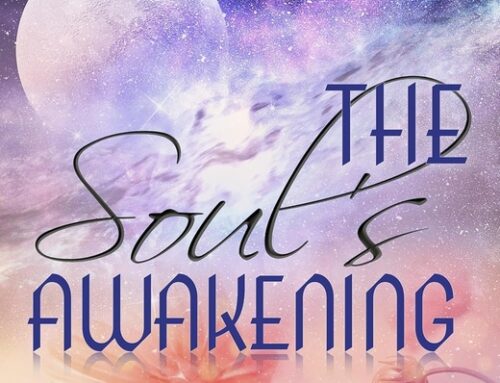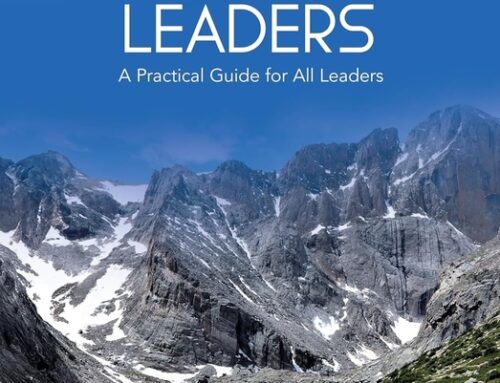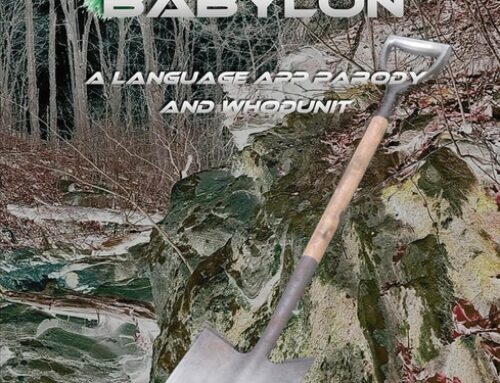
While I’m self-publishing technically, I see what I’m doing on another level. My main occupation is writer, and my secondary business is publishing. I have a fairly good grasp at how the book business works, and one of the things is that for bookstores to carry one’s book, the book has to have a minimum 40% discount to the bookstore, which means a 55% discount to the distributor, who then guarantees the 40% discount to the bookstores. Lulu could not guarantee such a thing. I found that bookstores interested in my first book, “The Middle-Aged Man and the Sea,” would only get a 15% discount through Lulu. That is, a bookstore had to pay $11 to sell the book for $12.95–and the store could not return the book if it did not sell. That’s the second requirement to get into bookstores: the book has to be returnable. It’s old-fashioned, and books travel back and forth, but that’s the odd business of bookselling.
The way I look at it, starting my own company, White Whisker Books, has been beneficial in getting out my own work in a timely manner. There’s still no way I can compete with the big publishers, but I try to mimick everything they do, including hiring editors, book designers, video producers, and publicists, sending out ARCs, and focusing on quality to the fullest of my ability. I don’t want to be a publisher for much longer, but then again, I may be spoiling myself. I get exactly the look and feel of the book that I want. Marketing, though, is perhaps the toughest part for me, and one where I’d enjoy a big company behind me.
On the positive side, I’ve been getting some great reviews, and my play, “Who Lives?”, which I also published, is getting a production, opening in L.A. on March 12. The producers of the play have hired a marketing firm, so I may be getting some marketing there.
Most print reviewers require a minimum of three-month advance of the publication date. This is where most self-publishers fall down. They are so eager to be published, that they go to Lulu or elsewhere, upload their files, pay their fees to have global distribution, and their book can be bought on Amazon within a month. And who will buy it? Grandma and the old college roommate?
Movie distributors would not rush out copies of their films to theaters and THEN start advertising, but that’s what most self-publishers do. Hence, my advice for self-publishers echoes what I’ve seen on this website:
1) Put money into a good book designer.
2) Once the book is designed, add the words ADVANCE READING COPY to the front, and all the information that reviewers need on the back. That includes the following:
- Price
- Publisher and imprint
- Format
- Number of pages in the finished book
- 13-digit ISBN
- Month and day of publication
- Distribution arrangements
- Publicity contact information
3) Hire a publicist or have a friend act as a publicist for reviewers to contact.
4) Choose a publication date four months from the date that you expect to have your ARCs printed and sent to you. This is something I didn’t anticipate well with my latest book. The designer, the printer, and UPS all took much longer than anticipated. I started sending books out for review today, just over two months in advance of the publication date. That may cut me out of some reviews, especially the likes of Publisher’s Weekly (see here: Publisher’s Weekly Submission Guidelines).
My first load of Advanced Reader Copies came in yesterday at 4 p.m., and I’m sending them out to reviewers today. My last book, “Months and Seasons,” has received something like 25 reviews so far, most of them from literary blogs. With that book, I’d hired a New York publicist who sent the book out, which resulted in something like four reviews. On my own, I contacted many more reviewers and pulled in another 21 reviews. Thus, this time, I’m doing it all myself.
Get an Editorial Review | Get Amazon Sales & Reviews | Get Edited | Get Beta Readers | Enter the SPR Book Awards | Other Marketing Services






















Great article. This is the first time I’ve heard of creating advanced copies for reviewers in a self publishing article. Thanks for the great advice. I’ll be looking forward to more articles here in the future.
We are looking to do pretty much the same thing with our own imprint by the end of the year so thanks again for posting this!!!
Hi Christopher.
Read your article with interest about review copies of self published books.
I have followed your model pretty much by launching my own ‘publishing
company’ with my line of children’s picture books. The first book is about
ready for printing the ARC. I like your advice of waiting to put in on
Amazon until I can get some reviews, though it will hold up some of the
readings that libraries have scheduled. Do you still think its a good idea
to put the printing on hold?
I am currently using Booksurge as my printer, though they are a POD company
(Amazon’s) I am using the POD business model for this first book of the
book line.
I read your comments about POD and LuLu. I believe Booksurge offers 40%
discount to distributors or Retail stores. But I am looking into this
further.
Is your company White Whisker Books publishing POD or are you printing
books and keeping stock at this point?
Any advice on how best to utilize POD for marketing to DISTRIBUTORS or
retail stores?
I look forward to your advice
Best regards,
Susan Chodakiewitz
Booksicals.com
(The BOOKSICALS Website is currently under construction – though the parent
company storiestolife lists some of the upcoming books.)
Susan–
Thank you for your note. I know of Booksurge, but I haven’t looked into
their distribution model. With Lightning Source, you can create any
discount you want, but if you offer a 55% discount (to the distributor,
Ingram), then bookstores are guaranteed to get 40%. Booksurge may have a
similar offering.
Remember, that’s only half the requirements for getting into bookstores.
The other half is returnability. With Lightning Source, you have three
options: returnable with the publisher paying the cost of printing and $2 to
receive it back; return and destroy (no charge except for the cost of
printing), or Not Returnable. If bookstores don’t matter to you–or you’re
not willing to go to these lengths–then don’t make it returnable and don’t
make such a steep discount. Instead, you might lower your list price
slightly and make “short” discount of, say, 35 or 40%.
I still use POD. Offset printing and storing them in my garage doesn’t
appeal to me. Of course, there are other options, such as having a
disbursement house. Some printers, maybe even Booksurge, will stock the
books and ship them wherever you need them whenever you need them–for a
fee. One place said they’d stock my books for $15 a month. Things like that
add up, though.
As for readings, you can always bring your own copies and sell them there,
can’t you? Publisher’s Weekly, Booklist, and other industry journals
specialize in reviewing noteworthy books, but as you saw, you need to give
them three or four months advance. If they see it’s already available, they
will shy away from reviewing it. They say they will not review POD books,
so it can’t look like one is the key. Even if you follow all the rules,
there’s no guarantee you’ll still get reviewed by any of these places. If
you write a good, short cover letter that makes your book sound interesting,
that’s a help.
Good luck! I hope this helps.